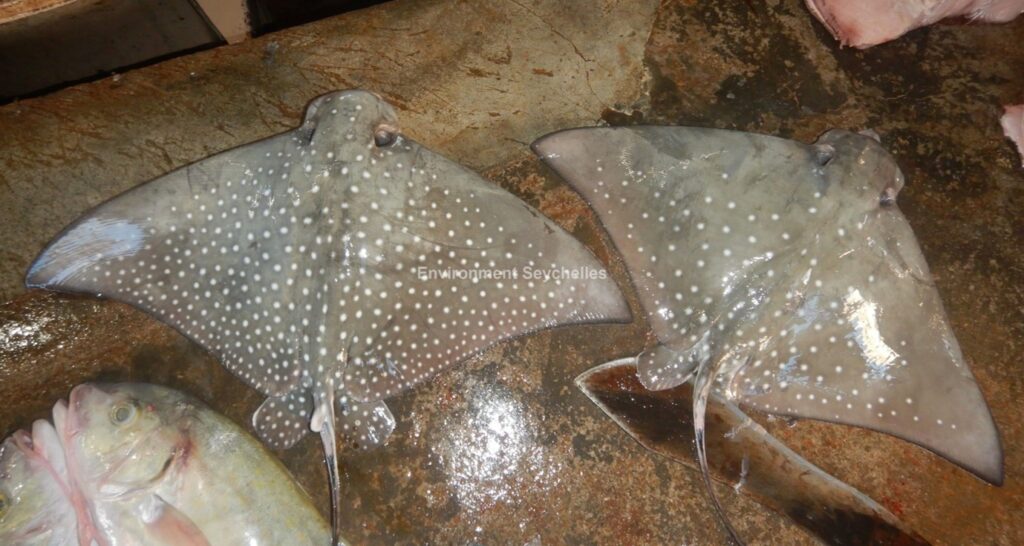The status of shark fisheries and their management in Seychelles undergoes review
05-06-2024 – The Seychelles Fishing Authority (SFA) in partnership with the Seychelles Conservation and Climate Adaptation Trust (SeyCCAT) recently completed a survey of the artisanal elasmobranch (sharks, rays and guitarfish) catch. This entailed an intensive 12-month survey of the 2023 catch focused on the main Victoria market and landing sites around the North of Mahe. The method utilised duplicated that of a previous survey undertaken in 2013 under the UNDP GEF Biodiversity Mainstreaming project. The objective therefore being to compare the results of the two years and see if there were any significant changes in the shark catch and guitarfish catch – the ray catch was not monitored in the 2013 survey.
During the 2023 survey a total of 4,441 elasmobranchs were recorded, comprising 17 shark species (4,128 specimens), 1 guitarfish species (80 specimens), and 6 ray species (313 specimens). The most commonly caught sharks were the grey reef shark or “Kaser” account for 29.3% of the sharks caught, scalloped hammerhead or “marto rouz” (23.7%), spottail shark (20.1%), and blacktip shark (15.7%) – the latter two species share the creole name “nennen pwent”.
The ray fishery was dominated by the ocellated eagle ray or “lare sousouri” which accounted for 90% of the rays caught with the shortfin devil ray or “swarko” accounting for 7%.

Comparing the 2023 shark catch data to 2013, the diversity was found to be significantly lower in 2023. Furthermore, three of the four most common species showed a significant decline in average size between the two time periods. These findings indicate that shark populations are in decline and that application of the precautionary approach to management of the elasmobranch fishery is appropriate.
Two years of data nine years apart, however, is not sufficient to draw strong conclusions or provide detailed guidance. Much more standardized data is required. SFA only has these two years (2013 and 2023) of data that breaks down the catch to the species level. SFA currently collect data for the elasmobranch fishery, from a small sampling of the catch extrapolated to give a single annual tonnage figure for all species combined. This does not allow for an understanding of species status or a proper assessment of trends in the fishery. The only way SFA can properly assess, and fulfill its obligations regarding the sound management of, the elasmobranch fishery is by regular species-resolution monitoring of the elasmobranch catch. The primary recommendation from this study, therefore, is that SFA arrange for the undertaking of regular, standardized, species-specific elasmobranch catch monitoring.
The second recommendation pertains to the national strategic approach to shark management. Seychelles has a National Plan of Action for the Conservation and Management of Sharks (NPOA) which was developed through an iterative process of national stakeholder consultation. The NPOA was written in 2016 and intended for a 5-year period of implementation 2016-2020. This plan however was never launched or the stakeholder steering committee formed. The NPOA offers a recognized approach to harnessing national capacity to manage elasmobranchs and meet Seychelles’ various international commitments in this regard.
The second main recommendation of this project, therefore, is that the existing plan be launched and implemented for a 2-year period so that progress can be made and assessed prior to the development of an updated plan.
General and more specific recommendations made in the study pertain to the need for the enforcement of existing legislation, the especial monitoring of globally threatened species including, as appropriate, the development of species management or recovery plans, the protection of certain species breeding aggregations; and the development of a national elasmobranch species red list so that status of local populations can be assessed and addressed distinct from their global status.

Leave A Comment